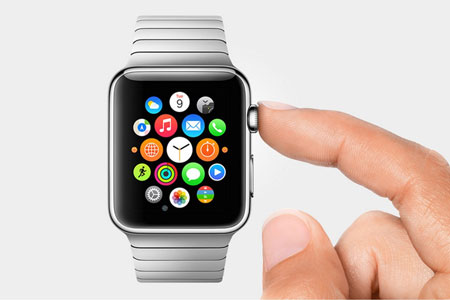 ••• shopper research
••• shopper research
Supermarket tests Apple Watch messaging
Already famous for being the first retailer to use UPC bar code scanners in 1974, Indianapolis-based Marsh Supermarkets has now become the first to test sending messages to the Apple Watch, reports RetailWire’s Tom Ryan.
Working with Los Angeles startup inMarket, Marsh installed beacons across its 75 stores. Shoppers who use Marsh’s mobile app or one of the apps in inMarket’s numerous applications will be able to decide if they want to receive push notifications on their Watch or smartphone when they enter the store.
Marsh decides which apps are triggered by the beacons and customers choose which apps work. If approved, a shopping list may pop up for a customer when they enter the store. Shoppers may also be pinged with recipe suggestions or offers in aisles.
Beacons present retailers with new tools to measure coupon and campaign effectiveness, down to timing and shopper proximity to products in aisles. With the software integrated with the retailer’s CRM system, the offers can be tailored based on past purchases and further aligned to what products are in the aisle the shopper is walking down.
InMarket claims that in-store beacon engagements achieve a 45 percent interaction rate, or five times higher than traditional push messages that occur without location context.
 ••• health care research
••• health care research
Researchers find our thirst trigger
Neurons that trigger our sense of thirst have been identified by Columbia University Medical Center neuroscientists, as detailed in a paper published in the online edition of Nature.
Researchers have long suspected that thirst is regulated by neurons in the subfornical organ (SFO), in the hy-pothalamus. Using optogenetics, which lets them control specific sets of neurons in the brain after inserting light-activated molecules into them, researchers Yuki Oka and Charles Zuker uncovered two types of neurons in the SFO that control thirst: CAMKII neurons, which turn thirst on, and VGAT neurons, which turn it off.
Shining light onto these molecules turns on the neurons without affecting other types of neurons nearby. When the researchers turned on CAMK11 neurons, mice immediately began to seek water and to drink intensively. This behavior was as strong in well-hydrated mice as in dehydrated ones. Once the neurons were shut off – by turning off the light – the mice immediately stopped drinking.
“The SFO is one of few neurological structures that is not blocked by the blood-brain barrier – it’s completely exposed to the general circulation,” said Oka. “This raises the possibility that it may be possible to develop drugs for conditions related to thirst.”
